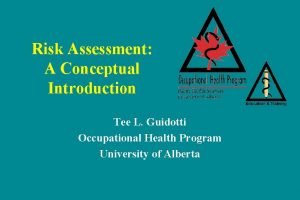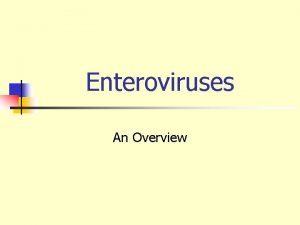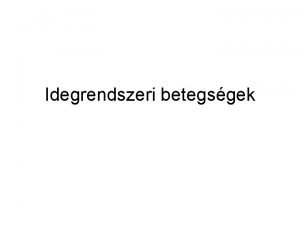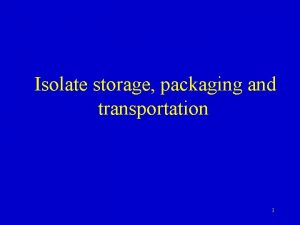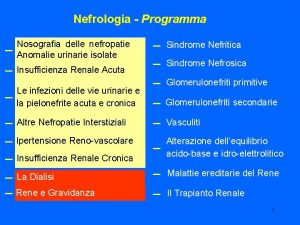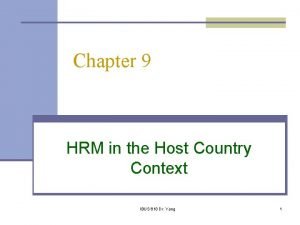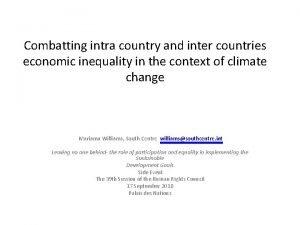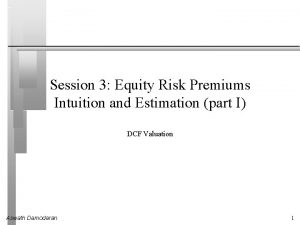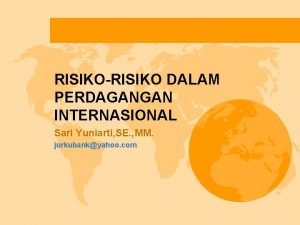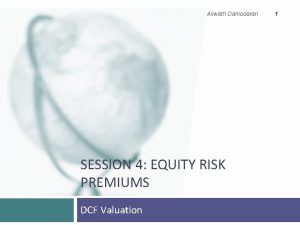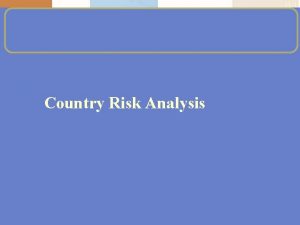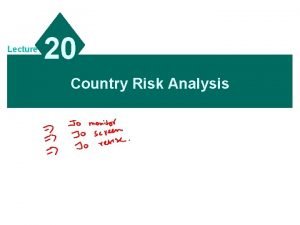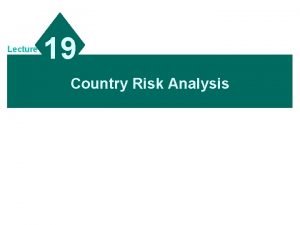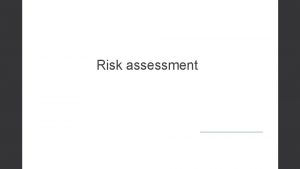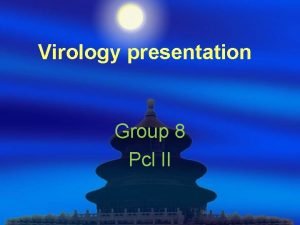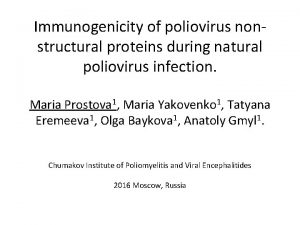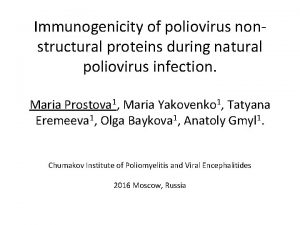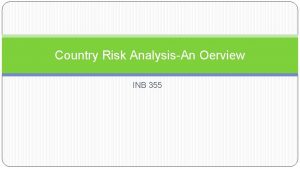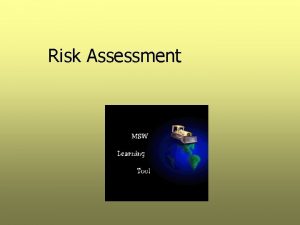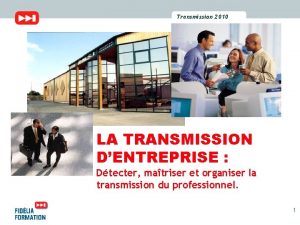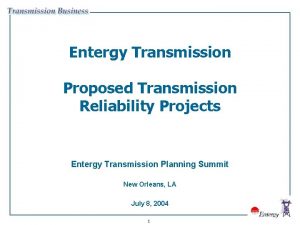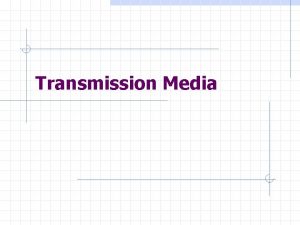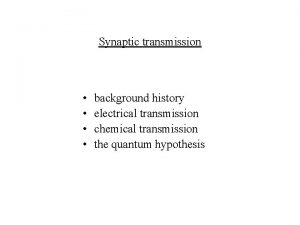Risk assessment for poliovirus transmission Country Poliovirus isolate



![Map location of [the case or envir. sample collection site] 4 Map location of [the case or envir. sample collection site] 4](https://slidetodoc.com/presentation_image_h2/8fed8085c5998e148f279ca1eb3b8a68/image-4.jpg)








![Map of proposed area for OPV 2 (and IPV use [if applicable]) 13 Map of proposed area for OPV 2 (and IPV use [if applicable]) 13](https://slidetodoc.com/presentation_image_h2/8fed8085c5998e148f279ca1eb3b8a68/image-13.jpg)


- Slides: 15

Risk assessment for poliovirus transmission Country: Poliovirus isolate [human or environment , onset or detection date, number nucleotide change]: Risk assessment as of date: dd/mm/yyyy

Part 1: Risk analysis by WHO* *WHO/HQ analysis conducted within 24 -48 hours of incident report. To be adapted and supplemented by Regional Office and Country Office Risk Assessments and Analyses

Epidemiologic details • Case/sample details – – – – – • Type of virus: [wild / VDPV/ Sabin 2] Virus serotype: [type 1, 2, 3] Source: [AFP / Environment/ asymptomatic person] EPID no: Date of onset or date ES collected: Reporting to CO/RO: Reporting date to WHO HQ: Location of onset of the case / envir. sample collection site: [if a person] Age and OPV dose status: Sequencing results: Nature of virus [nt difference from Sabin and closest matching sequence if available/applicable] + evidence of circulation Brief overview of most recent VDPV / WPV and response – Case / envir. sample details • Virus type [wild / VDPV; serotype] • Date of onset / Date of ES collected • Location – # of SIA since most recent case / positives envir. Isolate • Type of vaccine used in response (m. OPV 2, n. OPOV 2, t. OPV) 3
![Map location of the case or envir sample collection site 4 Map location of [the case or envir. sample collection site] 4](https://slidetodoc.com/presentation_image_h2/8fed8085c5998e148f279ca1eb3b8a68/image-4.jpg)
Map location of [the case or envir. sample collection site] 4

Immunization performance • Polio vaccination (OPV/IPV) status of NP AFP cases 6 -59 months [bar graphs] – Nationwide – Infected Admin 1 (or Admin 2, if applicable) • • % of Zero dose % of 3+ doses Conclusions/inferences: • SIA – Number of SIAs conducted current year, incl. (LQAS/IM) results + type of vaccine used [indicate whether infected area was covered] see notes – Details of SIAs conducted previous year, incl. (LQAS/IM) results + type of vaccine used [indicate whether infected area was covered] see notes Conclusions/inferences: • Routine immunization (source: WHO/UNICEF best estimates) – Pol 3 (OPV/IPV) and DTP 3, current year – Pol 3 (OPV/IPV) and DTP 3, previous year(s) Conclusions/inferences: • Date of t. OPV-b. OPV switch: [dd-mm-YYYY] – Time after cessation of OPV 2 [weeks/months/years elapsed between OPV 2 cessation and detection of PV] • Date of IPV introduction: [dd-mm-YYYY] – Extent: [nationwide? If not, where? ] 5

AFP surveillance performance • Epidemiologic curves (previous 3 years) [bar graph, by week of onset] – National level – Infected Admin 1 level • NP AFP rate and Stool adequacy (if possible, mapping at Admin 1 level) – Calendar year / Previous 12 months – Previous 6 months • Environmental surveillance (if applicable) – Monthly environmental chart for at least last 12 months by collection site and by province • Conclusions / inferences: 6

Country context • Population – Population <15 and <5 in infected Admin 1 and Admin 2 – In-country population movement (within country – focusing on infected area) • Internal movement of people, focus on infected area • IDPs – High risk population (in infected areas, especially) [if applicable] • Characteristics (e. g. , refugee, IDPs, inaccessible communities) • Reasons for considering it has “high risk” – International borders, neighbouring country(s) and population movement [if applicable] • Proximity of affected area to borders • Trade and travel patterns • Refugee movement • Security [Natural disaster, political instability, criminality/terrorism] (if applicable) • Upcoming major events in country that may affect response (e. g. elections, meetings that may involved key MOH staff) [if applicable] 7

Country capacity • National immunization service delivery ( as expressed by national EPI manager or higher authority) – Immunization service system: [strong / moderate / weak (specify)] – Human resources for management at all level: [adequate /inadequate /acute shortage, (specify)] – Human resources for service delivery: [adequate /inadequate/acute shortage (specify)] – Country’s past experience in conducting polio SIA: – Country’s past experience in conducting other immunization campaign: • GPEI-funded Human Resources in country [if applicable, use a table] – Number, location/level of duty, Functions: – Continued availability: till mm/yyyy 8

Detailed polio case investigation [To be completed by Regional Office and Country Office once information is available] • Key findings of field investigation [if known / if applicable] • Missed AFP cases found through active case search in the community and health facilities: • OPV/IPV coverage status assessed through rapid community survey: • Number and lab testing results of samples taken from contacts (AFP) / community (ES): • Health seeking behaviour of AFP case / missed opportunity to have reported the case earlier (if applicable): • Travel links & population movement: – Travel to other areas in-country: names of the districts – Travel to other country: name of country and district, province 9

Sub regional/regional risk (if applicable) 10

Proposed course of action (1) [To be completed by Regional Office and Country Office once information is available] • 1. Field investigation – Laboratory investigation: – Further case investigation & case finding : • 2. Enhance ongoing surveillance measures (AFP, environmental): • 3. Enhance /catch-up routine immunization (including b. OPV and IPV): 11

Proposed course of action (2) [To be completed by Regional Office and Country Office once information is available] • 4. Plans for vaccine response : – OPV 2 requested: [YES/NO] at this time • • Rationale (briefly) Target population, geographic area, age group Doses requested for each round Proposed dates SIA 1/2/3 – Type of OPV requested (m. OPV 2, n. OPV 2, t. OPV) and justification of the choice • 5. Plans to inform neighbouring countries : [who, when, how, by whom] 12
![Map of proposed area for OPV 2 and IPV use if applicable 13 Map of proposed area for OPV 2 (and IPV use [if applicable]) 13](https://slidetodoc.com/presentation_image_h2/8fed8085c5998e148f279ca1eb3b8a68/image-13.jpg)
Map of proposed area for OPV 2 (and IPV use [if applicable]) 13

Please note: country / regional offices complete ONLY Part 1 Part 2: Discussion on vaccine provision**

discussion, conclusion and recommendations 1. Assess risk – Virological risk – Contextual risk of further transmission – Risk for international spread Box instructions: Risk Potential: “Low / Medium / High” 2. Assess need for OPV 2 and evaluate vaccine request [if applicable] – Type of vaccine (m. OPV 2, n. OPV 2, t. OPV) – number of doses/rounds/extent/age – IPV [if applicable] 3. Provide recommendation to WHO DG [if applicable] 4. Provide recommendations to country 5. Instructions to UNICEF SD 15
 Types of country risk assessment
Types of country risk assessment Market risk credit risk operational risk
Market risk credit risk operational risk Poliovirus lab diagnosis
Poliovirus lab diagnosis Poliovirus hominis
Poliovirus hominis Poliovirus structure
Poliovirus structure Isolate storage
Isolate storage Isolate insulate
Isolate insulate Anomalie urinarie isolate
Anomalie urinarie isolate Host country and home country
Host country and home country Intra country vs inter country
Intra country vs inter country Brazil country risk premium
Brazil country risk premium Contoh country risk
Contoh country risk Damodaran erp
Damodaran erp Country risk factors
Country risk factors When quantifying country risk
When quantifying country risk Techniques to assess country risk
Techniques to assess country risk
